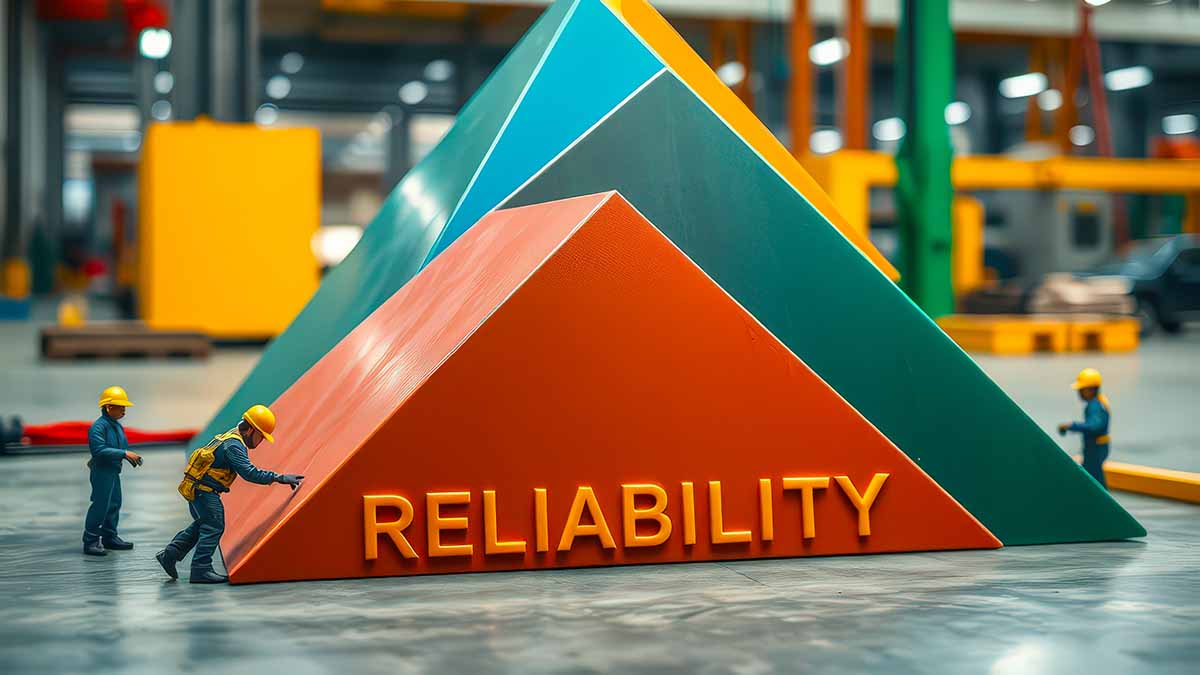Effective asset management is paramount for organizations to thrive and succeed in today’s dynamic and competitive business environment. When we think of how we will be successful, it all comes down to people.
Integrated Relationship between Reliability Professionals and Asset Management
Reliability and physical asset management are often used interchangeably in industrial operations and infrastructure management. However, these are two distinct and highly interconnected disciplines. Both disciplines focus on enhancing the performance and longevity of assets from different perspectives.
Aligning the business contributions of Reliability Professionals with those of Asset Management Professionals enables organizations to improve the overall performance of their assets, reduce costs, reduce risk, improve safety, and deliver greater value across the entire lifecycle.
Reliability Professionals – Focus on Asset Performance and Reliability
Reliability Professionals are focused on asset performance, emphasizing consistency, predictability, and reliability. To do so, Reliability Professionals contribute to business functions for asset design, analysis, and operational continuous improvement.
The goal is to minimize failures and unplanned or unscheduled downtime. Reliability Professionals accomplish through data analytics and predictive maintenance (PdM) strategies, using methodologies such as root cause analysis (RCA), failure modes, effects, criticality analysis (FMECA), reliability-centered maintenance (RCM) or reliability-availability-maintainability-safety (RAMS).
Reliability professionals focus on minimizing failures and downtime, while asset managers ensure cost-effectiveness across the asset lifecycle.
These techniques are frequently applied during the operate and maintain phase of the asset lifecycle to improve its reliability and availability. This, in turn, improves safety while reducing overall disruptions to operations.
Asset Management – Focus on Holistic and Integrated Approach
Asset management involves the lifecycle management of an organization’s assets – from design through operations and maintenance to end-of-life disposal and reclamation. The goal is to maximize the value derived from these assets over time while balancing cost, risk, and performance – what we refer to as the triple bottom line.
In some key industries, such as government services, profit isn’t the main driver – however, spending taxpayer dollars wisely to deliver the expected levels of service is a fundamental organizational objective.
This holistic business value approach includes demand management, investment planning, proactive maintenance, effective inventory management, ongoing asset health and condition monitoring, and risk management strategies. Asset managers ensure that assets are available when needed, operate efficiently, and meet regulatory compliance standards.
Asset management isn’t just about maintenance—it’s about balancing cost, risk, and performance across an asset’s entire lifecycle.
The widely accepted definition of Asset Management is ”the coordinated activities of the organization to deliver value from assets’ (ISO 55000 and GFMAM AM Landscape). This definition makes it very clear that various organizational stakeholders need to work together in an integrated approach to achieve the organizational objectives successfully.
Let’s consider all the business functions that Reliability Professionals are involved in. Successful asset management requires full integration with the reliability and maintenance functions to be able to meet the overall organizational goals and objectives.
Where Reliability and Asset Management Meet
Where Asset Management and Reliability Professionals collaborate, they create an integrated system or framework for managing assets throughout their lifecycle while enhancing performance and minimizing risks. Reliability Professionals contribute their expertise in improving asset reliability and performance, while Asset Managers focus on cost-effectiveness and life cycle management.
By sharing data, setting common goals, and working collaboratively, Reliability Professionals and Asset Managers can ensure that assets function efficiently, meet regulatory standards, and achieve the highest possible return on investment. Reliability practitioners are focused on RAMS, whereas Asset Management ensures that the RAMS aligns with the organizational and asset management goals and objectives.
Asset management systems, sometimes called enterprise asset management systems, track key data and information on each asset, from its nameplate design data to its performance, cost indicators, and any failure history.
Where reliability and asset management intersect, organizations unlock higher performance, lower risk, and maximized asset value.
The data collected in these systems is valuable for Reliability Professionals and Asset Managers when determining the most cost-effective strategies for asset replacement, maintenance, or upgrades.
The recently released Global Forum on Maintenance and Asset Management (GFMAM.org) Asset Management Landscape (2024) and Maintenance Framework highlight the importance and integration of Reliability Professionals and Asset Managers work in delivering organizational goals and objectives. These are available for free download and are an excellent resource for those in the field.
In today’s complex industrial environment, the partnership between Reliability Professionals and Asset Managers is critical to achieving operational excellence and financial stability. Organizations that can foster this collaboration are better positioned to thrive in the long term with reliable, well-maintained assets driving performance and profitability.











